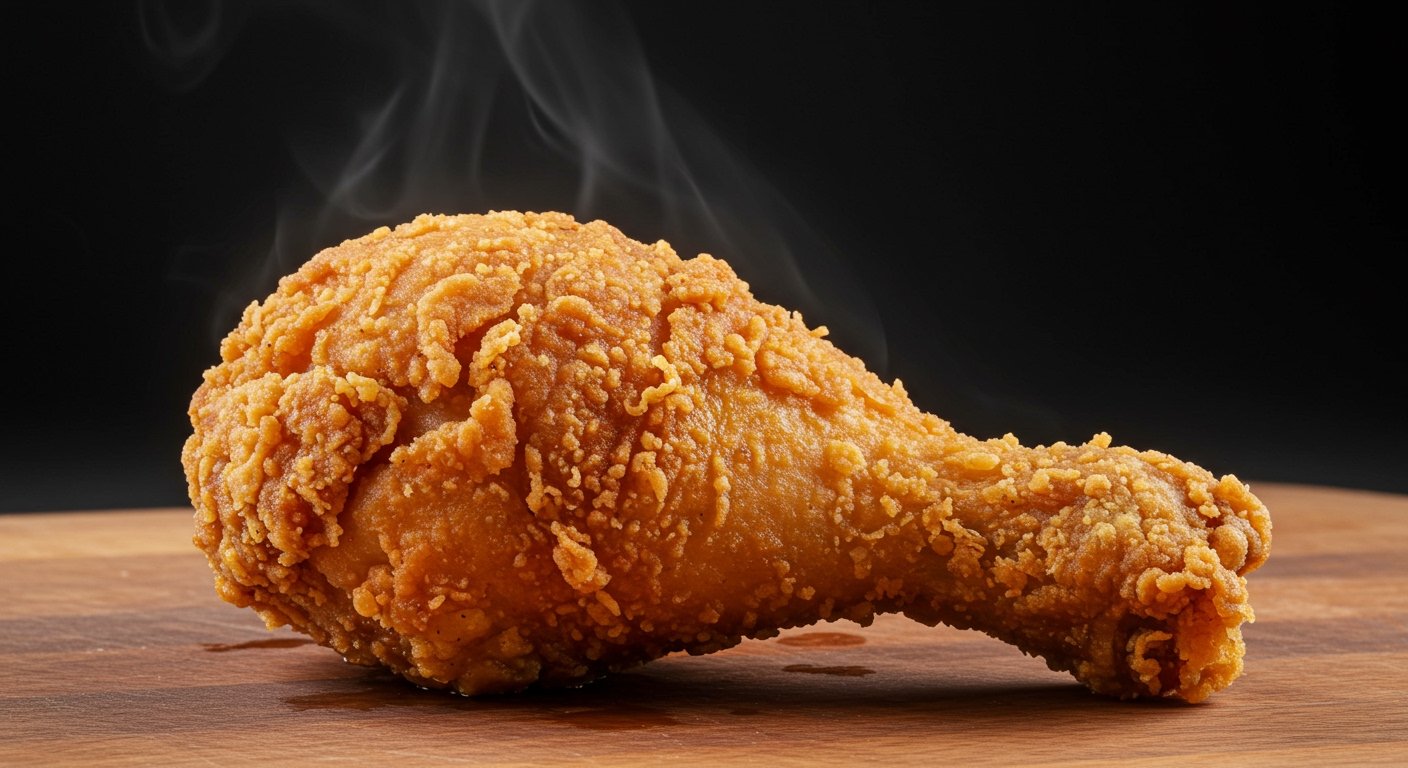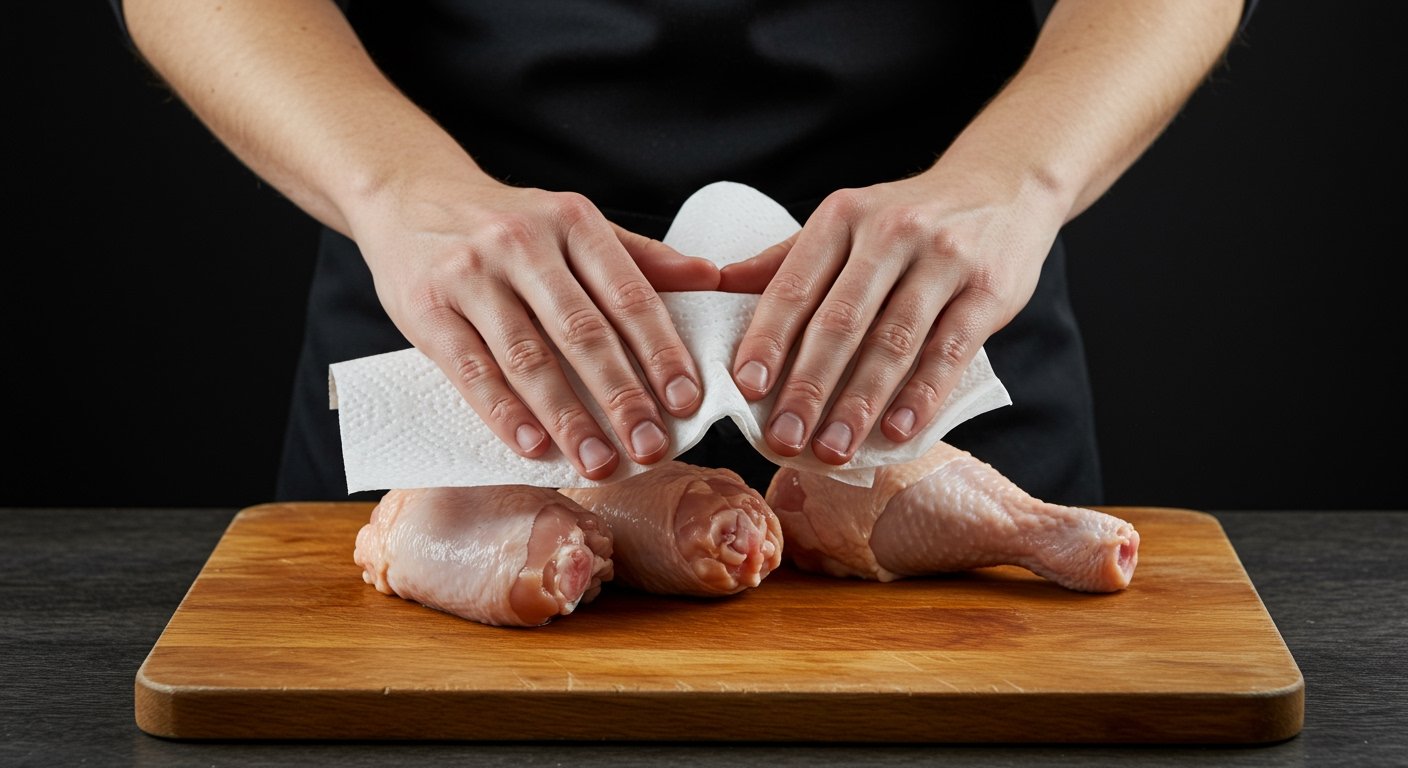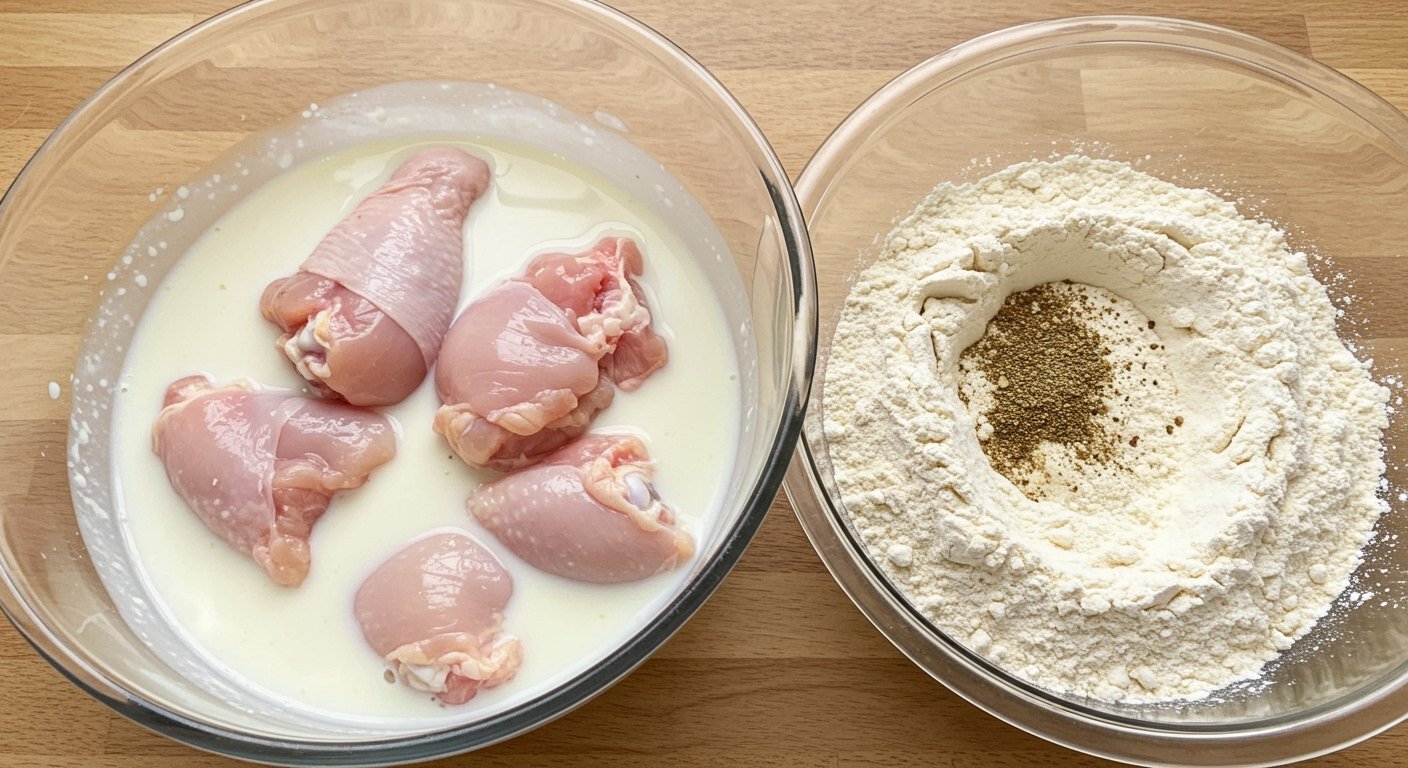There’s a universal joy that comes with biting into a piece of perfectly crispy fried chicken. That satisfying crunch, followed by juicy, tender meat, is a culinary experience many aspire to recreate at home. But what exactly is the secret to achieving this golden-brown perfection? If you’ve ever wondered how to make crispy fried chicken that rivals your favorite restaurant, you’re in the right place. This guide will walk you through every crucial step, demystifying the science and techniques behind truly exceptional fried chicken.

The desire for crispy fried chicken is widely shared. In fact, a 2024 Fried Chicken Consumption Habits Survey revealed that 44% of participants defined the ideal fried chicken as crispy, identifying crispiness as the most important flavor element. So, let’s dive into the core principles that deliver that sought-after crunch.
What Makes Fried Chicken So Crispy?
Many factors contribute to the delightful crispiness of fried chicken. It’s a delicate balance of science and technique that transforms humble chicken pieces into a crunchy masterpiece. Understanding these elements is the first step in learning how to make crispy fried chicken consistently.
The Maillard Reaction: Flavor and Color
One of the most crucial scientific processes at play is the Maillard reaction. This chemical reaction occurs between amino acids and reducing sugars when food is heated, leading to the development of complex flavors and the desirable golden-brown color of your fried chicken [2]. The Maillard reaction is essential for creating the crust and new flavor compounds that are key to crispy fried chicken. Without it, your chicken would lack its signature deep flavor and appealing hue. This reaction typically starts rapidly at temperatures around 280°F to 330°F (140°C to 165°C) [2, 10].
The Moisture Factor
Another critical element is moisture control. Minimizing moisture is vital; patting the chicken dry before coating and frying removes excess surface moisture, allowing the coating to adhere evenly and crisp up. When chicken is placed in hot oil, the water on its surface and within the breading quickly evaporates, creating steam. This steam then forms tiny bubbles and pockets within the coating, which solidify into the crunchy exterior we all love [9].

The Essential Ingredients for Extra Crispy Fried Chicken
While technique is paramount, the ingredients you choose and how you prepare them lay the foundation for the best crispy fried chicken. From the cut of chicken to your breading, every choice matters.
Choosing Your Chicken
For classic crispy fried chicken, bone-in, skin-on pieces (thighs, drumsticks, breasts, wings) are ideal. The skin renders fat during cooking, contributing to flavor and crispiness, while the bone helps distribute heat evenly and keeps the meat juicy.
The Perfect Breading Mix: How do you get the flour to stick to fried chicken?
The secret to an extra crispy fried chicken coating lies in your breading. A common blend includes all-purpose flour, cornstarch, and a variety of seasonings. The cornstarch helps reduce gluten development, leading to a lighter, crispier crust. To ensure the flour sticks, a classic two-stage breading process is key:
1. Wet Dredge: Typically, chicken is first dipped in a liquid, most commonly buttermilk.
2. Dry Dredge: Then, it’s thoroughly coated in a seasoned flour mixture.
This wet-to-dry approach creates layers that trap moisture and air, resulting in a robust and crunchy coating. Some recipes also recommend a “double dredge” – dipping the floured chicken back into the wet mixture and then into the flour again – for an even thicker, more rugged extra crispy exterior.
Buttermilk’s Role in Buttermilk Fried Chicken Crispy
Buttermilk is a star ingredient in many Southern crispy fried chicken recipes. Its mild acidity tenderizes the chicken meat without breaking it down, while also providing a sticky surface for the breading to adhere to. The lactic acid in buttermilk also contributes a subtle tang that complements the savory spices, creating incredibly flavorful and moist fried chicken.

Mastering the Fry: Techniques for Perfect Crispiness
Now, for the heart of the matter: the frying itself. This is where the magic happens and where you learn the real secrets to crunchy fried chicken.
Temperature Control is Key: What is the secret to making crispy fried chicken without burning it?
Maintaining an ideal frying temperature is absolutely vital. Generally, this means keeping your oil between 350°F and 375°F (175°C to 190°C) [9]. Why is this range so important? If the oil is too hot, the outside of the chicken will burn quickly before the inside cooks through, leading to a charred exterior and raw interior. If the oil is too cold, the coating absorbs excess oil, resulting in a greasy and soggy texture, not the light and crispy one you desire [9]. A good thermometer is your best friend here.
The Double Frying Chicken Technique
For truly next-level extra crispy fried chicken, consider the double-frying technique. This method involves frying the chicken twice:
1. First Fry: Cook the chicken at a slightly lower temperature (around 325°F/160°C) until it’s cooked through and lightly golden. This step ensures the interior is perfectly cooked.
2. Second Fry: Remove the chicken, let it rest briefly (5-10 minutes), then increase the oil temperature to 375°F (190°C) and fry again for a shorter period, usually 2-4 minutes. This high-heat second fry is what gives you that incredible, ultra-crispy crust and helps to get crispy fried chicken skin.
Pressure Frying for Ultimate Crispiness
If you’ve ever wondered why fried chicken from popular chains like KFC and Popeyes has such a unique crispness and juiciness, part of the answer lies in pressure frying. This technique cooks the chicken quickly and evenly in a pressurized vessel, which helps create a crispy exterior while keeping the interior incredibly juicy [9]. While specialized equipment is needed, it highlights the importance of rapid, even cooking for optimal results.

Crispy Fried Chicken Beyond the Deep Fryer
Don’t have a deep fryer or want a lighter option? You can still achieve delicious results.
Air Frying for Crispiness
For crispy fried chicken without a deep fryer, an air fryer can be a fantastic alternative. While it won’t replicate the exact texture of deep-fried chicken, air frying uses circulating hot air to achieve a surprisingly crispy exterior with significantly less oil. It’s a great option for those looking for a healthier take on their favorite dish. Learn more about the benefits of air frying in our deep dive on is air frying healthier deep dive.
Common Pitfalls: Why Is My Fried Chicken Not Crispy?
Even with the best intentions, things can go wrong. Here are some common reasons your fried chicken might not be crispy:
- Too Much Moisture: Not patting the chicken dry or overcrowding the fryer can lower oil temperature and lead to steaming rather than frying.
- Incorrect Oil Temperature: As discussed, oil that’s too cold leads to greasiness, while oil that’s too hot burns the exterior prematurely.
- Insufficient Breading: A thin or uneven breading won’t provide the necessary structure for crispiness.
- Not Letting it Rest: Resting fried chicken on paper towels can trap steam underneath, making the bottom soggy. Always use a wire rack to allow air circulation and maintain crispiness [9].
Key Takeaways
- Pat chicken dry to remove excess moisture before breading.
- Use a seasoned flour and cornstarch blend for the best crispy fried chicken flour.
- Marinate in buttermilk for tenderization and flavor.
- Maintain oil temperature between 350-375°F (175-190°C) for perfect crispiness without burning.
- Consider double-frying for an extra crispy coating.
- Rest fried chicken on a wire rack to prevent sogginess.
What is the Real Secret to Perfectly Crispy Fried Chicken?
The real secret to perfectly crispy fried chicken isn’t just one thing; it’s a combination of meticulous preparation, understanding the science, and mastering the frying technique. From the initial brine or buttermilk soak to the final moments in the hot oil, each step builds towards that ultimate crunchy bite. By paying attention to moisture, maintaining consistent oil temperature, and perhaps even employing the double-frying method, you can consistently achieve incredibly delicious and satisfying results at home.
Want to elevate more of your home cooking? Check out our tips on the secret to restaurant-quality steak or explore 25 easy weeknight dinners under 30 minutes for more culinary inspiration.
